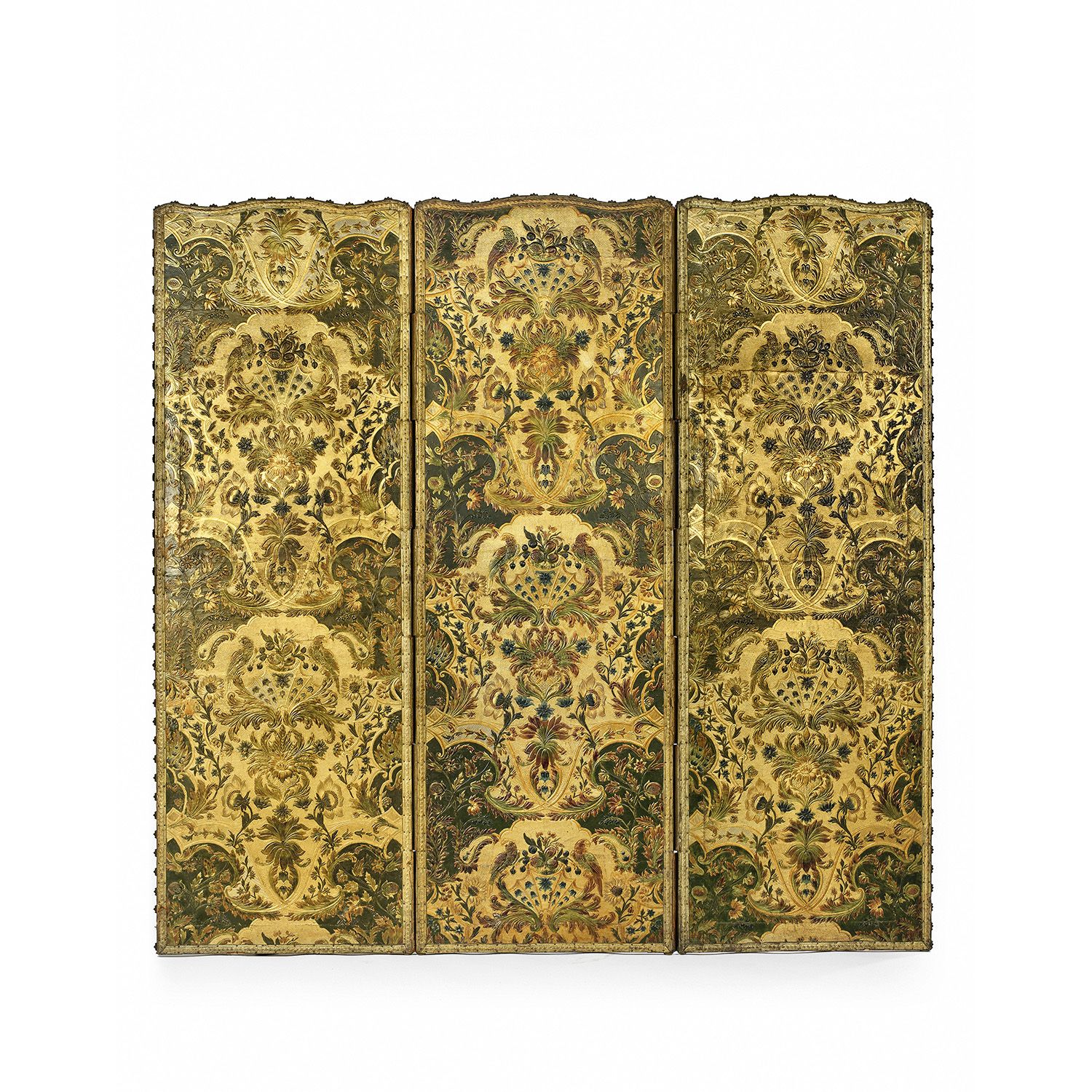Description
CORDULOUS LEATHER SCREEN, 19th CENTURY with three leaves in embossed leather with green, brown, ochre and gold decoration of reserves in shield and cartouche with decoration of birds on bottom of flowery branches. (Accident to a leaf) A 19th century Cordoba leather screen Dimensions of a leaf : 198 X 66 X 3,5 CM - 77.95 X 25.98 X 1.18 IN. 200 x 198 x 15 CM - 78,7 x 77.95 x 5,9 IN. - - Cordoba leather, also known as Guadamacile, is a goat or cow skin tanned with gum-resin from a shrub, engraved, embossed and sometimes painted or gilded. This technique appeared in Europe, in the South of Spain, following the conquest of the country by the Moors. Its fame spreads from the thirteenth century: it is then transported to France, Italy and Flanders especially by the arrival of the Spanish Habsburgs in power. At the end of the sixteenth century, Cordoba leather became very popular, being used to cover chests, panels or, as here, screens. It also gradually replaced wall carpets before giving way to painted textiles in the 18th century. The effects of relief and decoration are obtained by a succession of delicate operations: embossing, molding, embossing, hammering, striking with irons, punching, engraving, decoration with silver or copper leaf, even gold. The result gives the leather the appearance of carved wood or the finest marquetry.
80
CORDULOUS LEATHER SCREEN, 19th CENTURY with three leaves in embossed leather with green, brown, ochre and gold decoration of reserves in shield and cartouche with decoration of birds on bottom of flowery branches. (Accident to a leaf) A 19th century Cordoba leather screen Dimensions of a leaf : 198 X 66 X 3,5 CM - 77.95 X 25.98 X 1.18 IN. 200 x 198 x 15 CM - 78,7 x 77.95 x 5,9 IN. - - Cordoba leather, also known as Guadamacile, is a goat or cow skin tanned with gum-resin from a shrub, engraved, embossed and sometimes painted or gilded. This technique appeared in Europe, in the South of Spain, following the conquest of the country by the Moors. Its fame spreads from the thirteenth century: it is then transported to France, Italy and Flanders especially by the arrival of the Spanish Habsburgs in power. At the end of the sixteenth century, Cordoba leather became very popular, being used to cover chests, panels or, as here, screens. It also gradually replaced wall carpets before giving way to painted textiles in the 18th century. The effects of relief and decoration are obtained by a succession of delicate operations: embossing, molding, embossing, hammering, striking with irons, punching, engraving, decoration with silver or copper leaf, even gold. The result gives the leather the appearance of carved wood or the finest marquetry.
